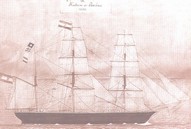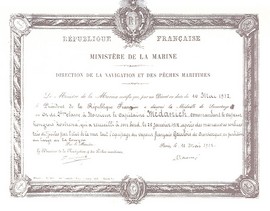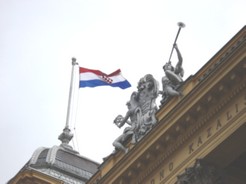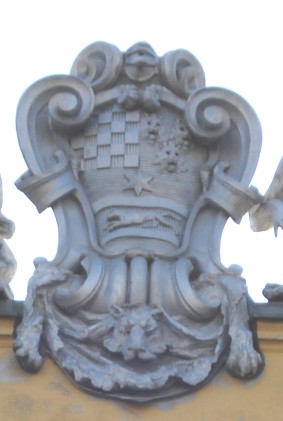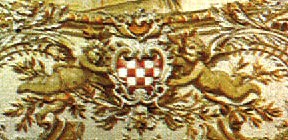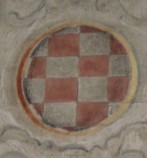 | Croatian Coats of Arms of the 19th century, as well as in previous and later periods, are of amazing variety and beauty. It is therefore no surprise that they can be found throughout Europe, in the USA, and in Australia. They are often very nice decoration on official documents, postacards, books, playing cards, dishes, bags, fans, houses, monuments, etc. On the photo is a detail from the golden book of donors, when the Croatian Music Hall (Hrvatski glazbeni zavod) was founded in Zagreb in 1871. |
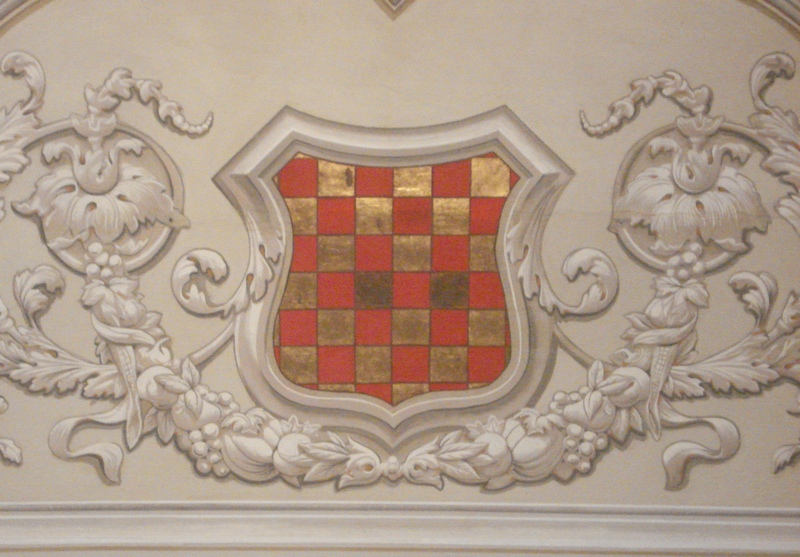
Croatian Coat of Arms in the city of Sombor, the City Hall, 1808, and
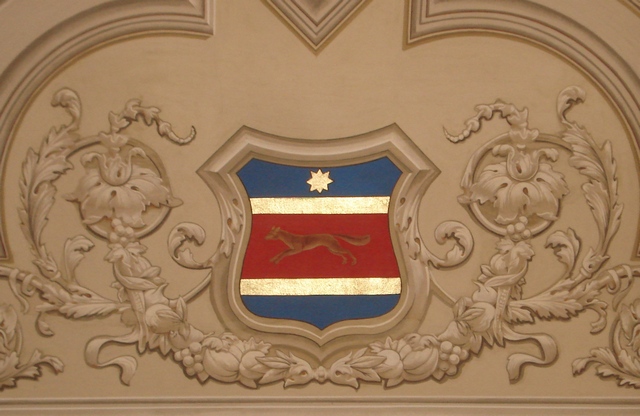
the Coat of Arms of Slavonia, and
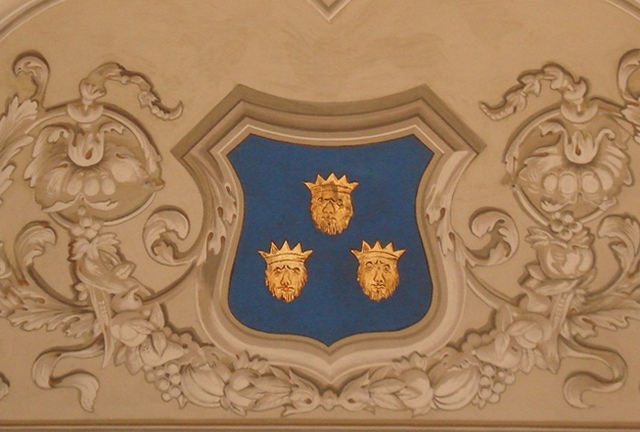
the Coat of Arms of Dalmatia.
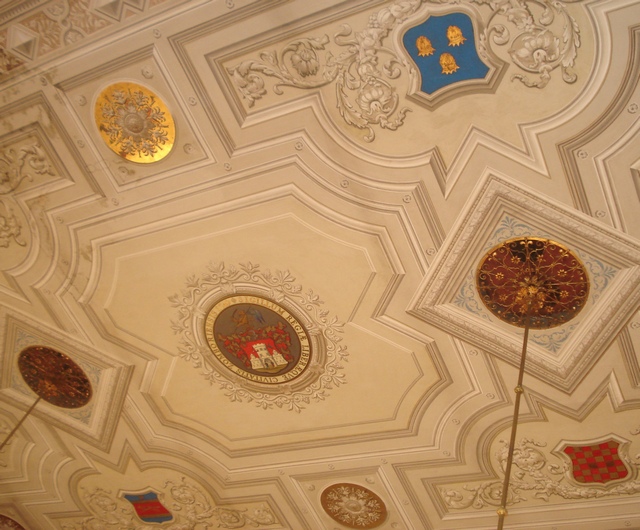
The ceiling of the City Hall of Sombor with the Coat of Arms of the the city of Sombor in the middle,
surrounded with Coats of arms of the United Kingodm of Croatia, Slavonia and Dalmatia
(bottom right, left, and up on the right respectively; missing on the photo, up on the left, Erdely's Coat of Arms)
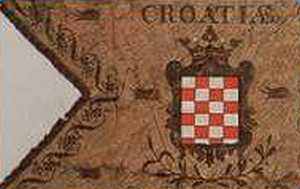
Krunidbena zastava (coronation flag), 1830, source
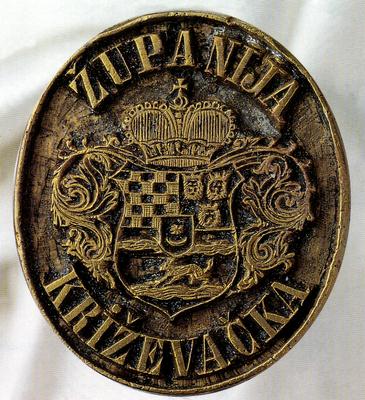
Seal of the Križevci County, 19th century
photo from Croatian History Museum
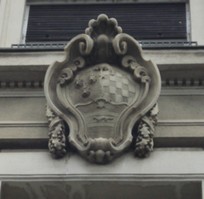
Croatian Coat of Arms above the main entrance to the building of Savska 2, Zagreb, built in 1832
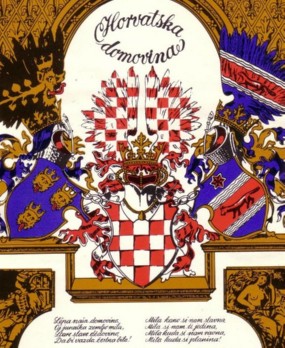
Horvatska domovina (Croatian homeland), 1835., by Antun Mihanovic
Croatian national anthem
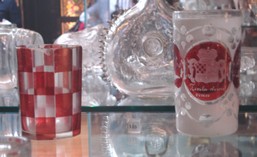
Two glasses with Croatian Coats of Arms made in Osredek, the left one from 1840-1845, and the right one from the middle of the 19th century,
both kept in the Museum of Arts and Crafts (Muzej za umjetnost i obrt), Zagreb
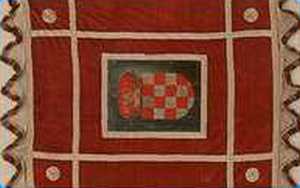
Hrvatski preporod (Croatian Revival) 1842, source
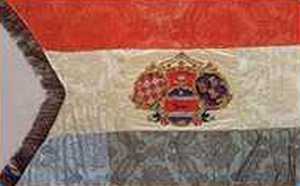
Zastava bana Jelačića (Flag of Governor Jelačić), 1848, source
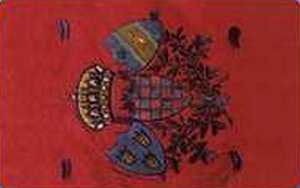
Zastava bana Vlašića (Flag of Governor Vlašić), 19th century, source
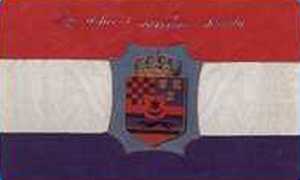
Zagrebačka narodna garda (Zagreb People's Guard), 1848, source
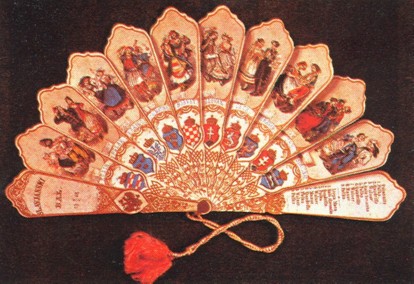
A fan from 1848
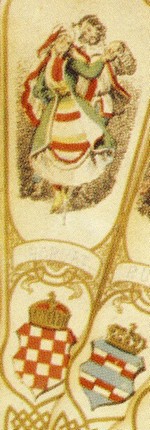
A detail from a similar fan from 1909, Krapina
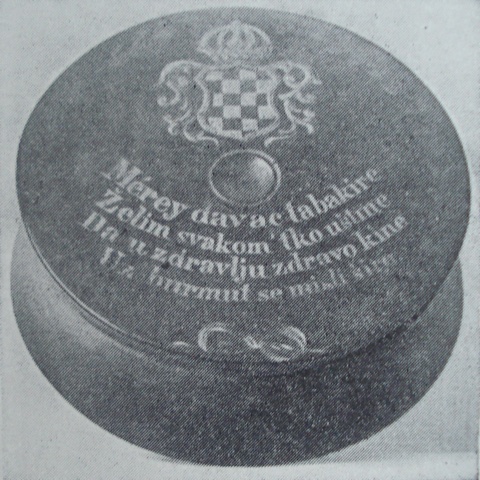
Wooden snuff (drvena burmutica) from the first half of the 19th century, kept in the Museum of Arts and Crafts in Zagreb
photo from Croatian Encyclopaedia, Zagreb 1941
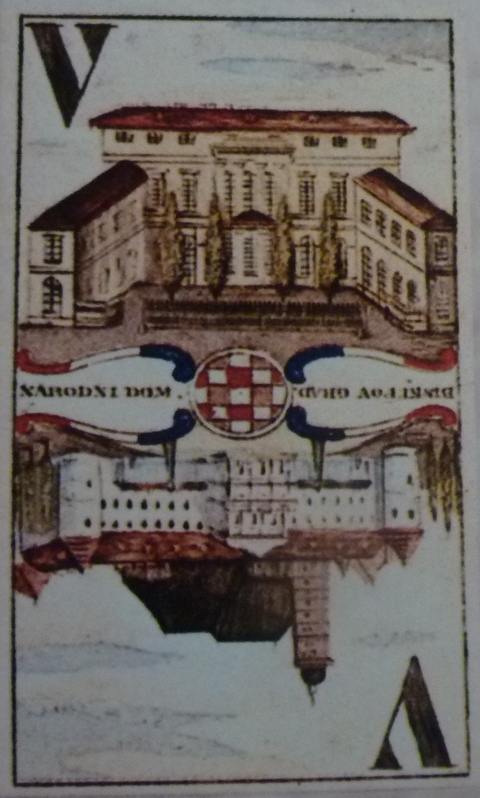
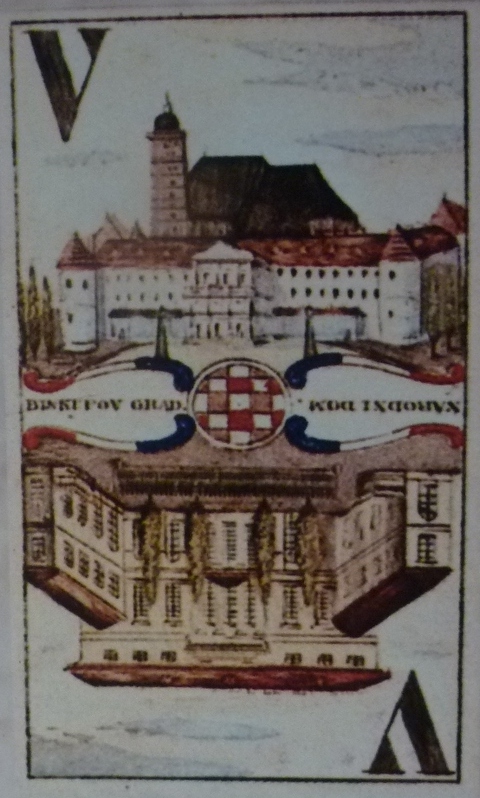
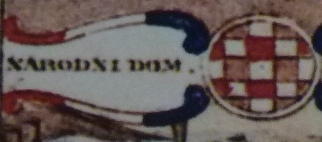
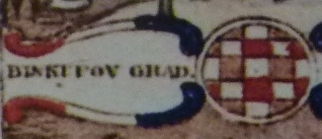
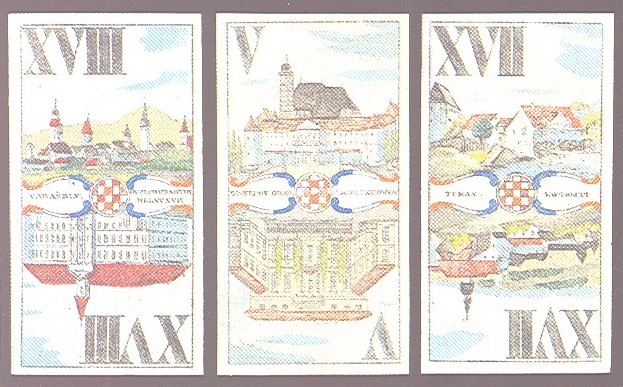
Dvorane zagrebačke karte (The Halls of Zagreb Playing Cards), 1847/1848.
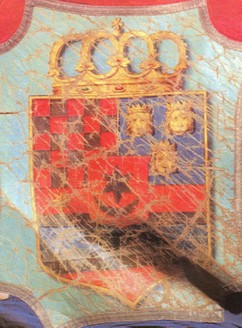
A detail from the flag of the Academic Battalion from 1848,
with inscription that can be seen on enlarged photo: For the Constitution and people's freedom
(in Croatian: Za ustav i narodnu slobodu)
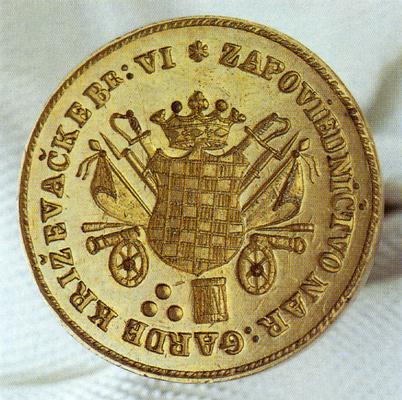
Seal of the Command of the Krizevci Home Guard, 1848/49
photo from Croatian History Museum
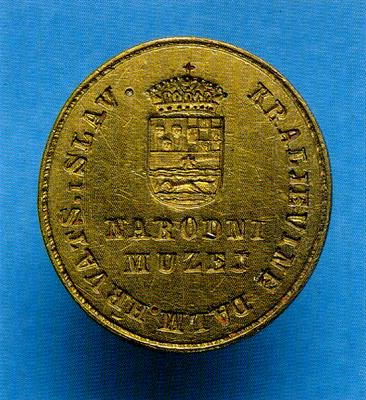
Seal of the National Museum of the Kingdom of Dalmatia, Croatia and Slavonia, 1854-1865
photo from Croatian History Museum
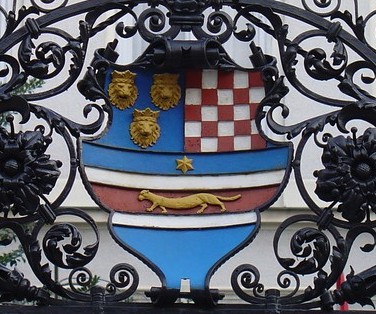
Croatian coat of arms in front of Croatian History Institute, Zagreb
(Coat of Arms of United Kingdom of Dalmatia, Croatia and Slavonia)
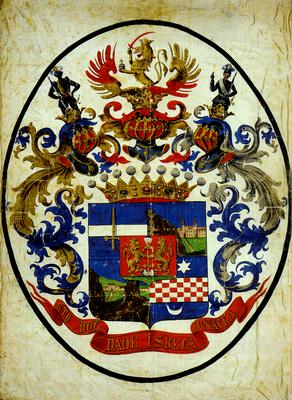
The coat of arms granted to ban Josip Jelacic in 1854.
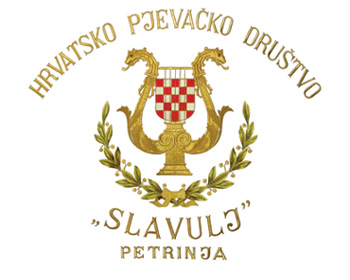
Croatian Singing Club "Slavulj" (Nightingale), 1864
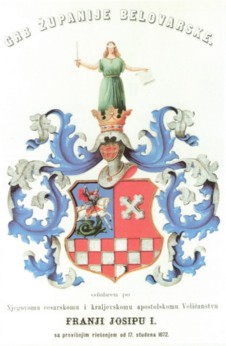
Coat of arms of the Bjelovar county, 1872
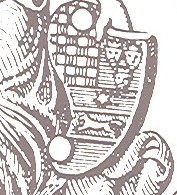
A detail from a memorial plaque of the opening of the modern University of Zagreb, 1874.
(The University of Zagreb exists since 1669)
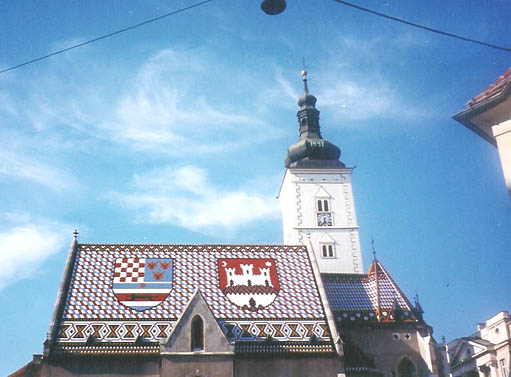
Croatian coat of arms on the roof of the Church of St. Marko in Zagreb, since 1878
(photo by Hippo)
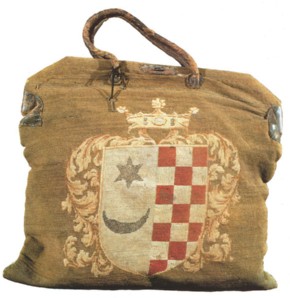
A bag of Ljudevit Gaj (Ludwig von Gay), 19th century
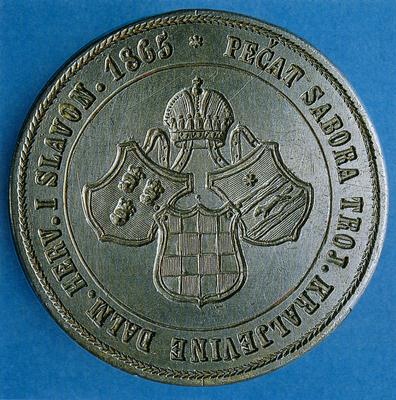
Seal of the Croatian Parliament, Zagreb, 1865
photo from Croatian History Museum
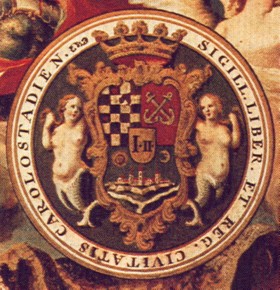
Seal of Karlovac, 1781
from the charter proclaiming Karlovac a free royal city
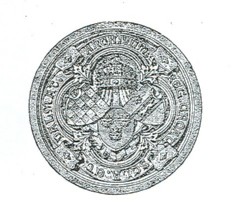
Archivum Reg. Croat. Sla. et Dalmat., founded in 18th century
(Archives of the Kingdom of Croatia, Slavonia and Dalmatia),
today the Croatian State Archives
Croatian Coats of Arms on ships, mostly brigs,
of the Rijeka bay in the 19th century
The brig is a two-masted sailing ship where both masts are square rigged. The rear mast carries a gaff sail as well, see definitions of various shiptypes here.
I express my sincere gratitude to Mr Darko Dekovic, Rijeka,
for permission to use photos from a wonderful monograph [Barbalic, Marendic].
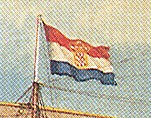
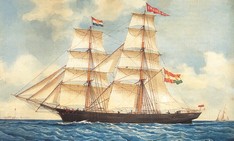
Croatian coat of arms (on threecolor flag) on the front mast of the Enrica brig built in 1868 in Rijeka, 40 m long
Captian Paskval Stipanovic, travelled to New York, Belfast, Queenstown, Cardiff, Montreal, Gibraltar
Painted by a French painter Antoine Roux, junior, 1892 (photo from [Barbalic, Marendic, p. 16])

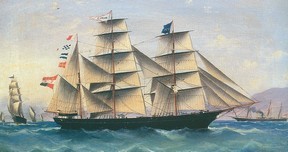
Croatian coat of arms in blue color on the barg Mimi P(ajkuric), built in Rijeka in 1866
(photo from [Barbalic, Marendic, p. 56])
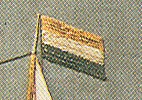
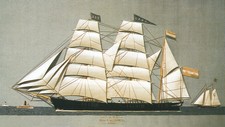
Croatian threecolor on barg Lada, built in Rijeka in 1871
(photo of the silk model from [Barbalic, Marendic, p. 62])

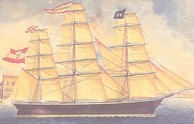
Croatian coat of arms on nave Marietta W(allner) (born Bakarcic), built in Rijeka in 1863
(photo from [Barbalic, Marendic, p. 73])
Two Croatian coats of arms on the Kostrena steamer
(photo from [Barbalic, Marendic, p. 77]):
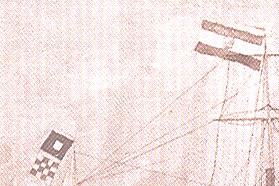
Pepe Medanic, captain of a steamer Kostrena, saved a French steamer Gaulois in Biskay bay in very difficult conditions. The French president conferred a medal. Maritime press reported on this saving throughout the world.
See the original facsimile published in [Barbalic, Marendic, p. 77]:
| RÉPUBLIQUE FRANÇAISE MINISTČRE DE LA MARINE DIRECTION DE LA NAVIGAITON ET DES PĘCHES MARITIMES Le Ministre de la Marine certifie que, par Décret en date du 10 mai 1912, le Président de la République Française a décerné la Médaille de Sauvetage en or de 2ęme classe ŕ Monsieur le capitaine Medanovich commandant le vapeur hongrois (!) "Kostrena", qui a recueilli ŕ son bord, le 25 janvier 1912, aprés de maneuvres rendues trés difficiles Par Directeur de la Navitation et les Pęches Maritimes [signature] Paris, le 10 Mai 1912 [signature]
|

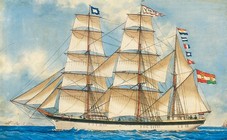
Barg Vinka with Croatian threecolor and a sketch of Croatian coat of arms,
built in Sunderland in Great Britain in 1865, since 1879 in Croatia, in Kostrena.
Its first captain was Ivan Randic Kuzmin, known as captain Jovanin, longstanding pilot at Suez
and a member of the French Astronomical Society (photo from [Barbalic, Marendic, p. 78])

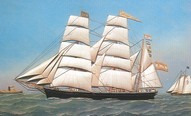
Barg Hrvat (The Croat), built in 1875 in Bakar
(photo of the silk work from [Barbalic, Marendic, p. 105])

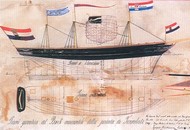
Plan of the barg Grad Karlovac (The City of Karlovac, in Croatia), built in Kraljevica in 1868
(photo from [Barbalic, Marendic, p. 117])

Unknown boat with Croatian coat of arms in the middle of the mast
(photo from [Barbalic, Marendic, p. 123])
![]()
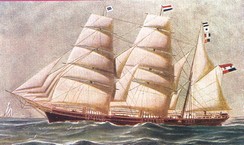
Barg Tri sina (Three Sons - of Vjenceslav Turkovic, a Croatian patriot and Maecenas),
52 m long, built in Kraljevica in 1875, with Croatian threecolor on the main mast
(photo from [Barbalic, Marendic, p. 124])
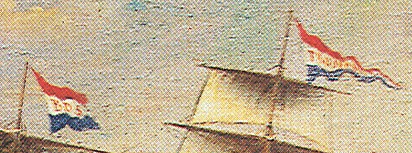
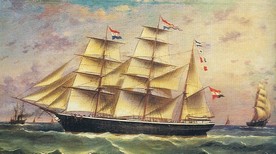
Barg Trojednica (Threeune, i.e. United Kingdom of Croatia, Dalmatia and Slavonia)
BDS (Brodarsko Drustvo Senj - The Senj Shipping Society).
On the main mast there is the Croatian threecolor flag with the name of the barg - Trojednica.
Painted by Ivancovich (photo from [Barbalic, Marendic, p. 126]).

Barg Hervatska (Croatia), built in Senj in 1874
(photo from [Barbalic, Marendic, p. 132])
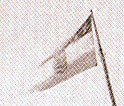
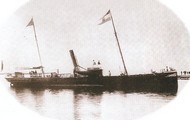
Steamer Hrvat (Croat) built in Recice near Rijeka in 1872,
with Croatian flag on the main mast(photo from [Barbalic, Marendic, p. 143])

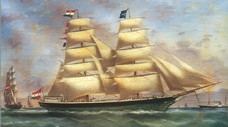
Brigantin Ida P(ersic), built in Rijeka in 1869 (the name was initally Secunda)
(photo from [Barbalic, Marendic, p. 164])
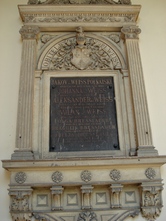
![]()
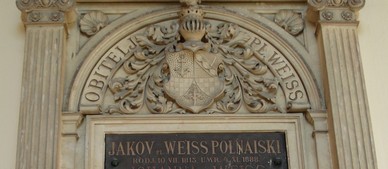
Croatian coat of arms from in the heraldry of the noble Jewish family of Weiss (19th century)
in the arcade of the Zagreb cemetary
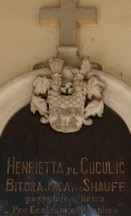
![]()
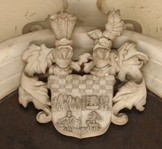
Croatian coat of arms in the heraldry of the noble family of Cucolic (19th century)
in the arcade of the Zagreb cemetary
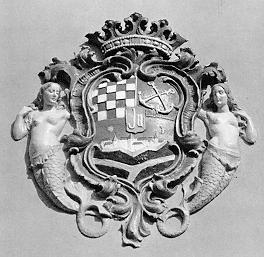
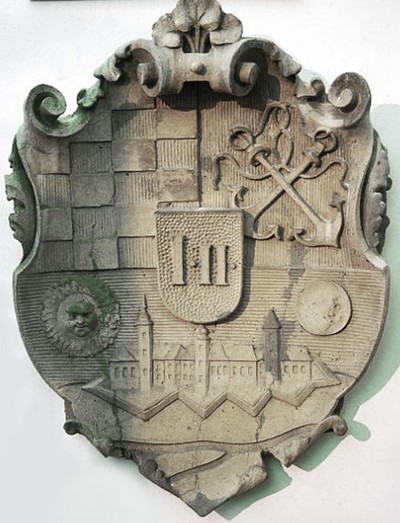
Coats of arms of the town of Karlovac, 19th century
Historical zupanija coats of arms in Croatia containing red and silver squares:
Bjelovar 1872, Krizevci 1759, Rijeka 1864, Severin 1772, Zagreb 1759
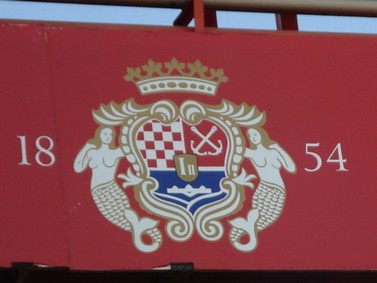
The Karlovac beer, 1854 (Karlovacko pivo)
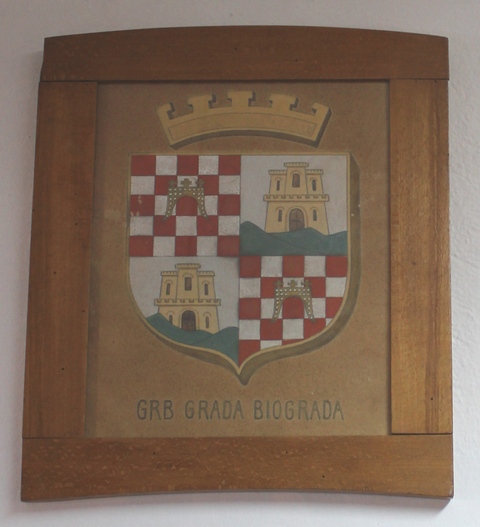
Coat of Arms of the city of Biograd, 19th century, kept in the City Museum of Biograd.

A part of the Coat of Arms of the Jelacic family, 1860, source [Molnar]
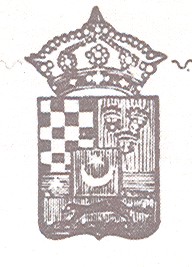
Proclamation of the Deit (Sabor) of the United Kingdom of Croatia, Dalmatia and Slavonia
from 1847 about introducing Croatian language as official language of the Deit insted of Latin.
Croatia was the last country in Europe which abandoned
official usage of Latin language in the Deit!
Here you can see the Coat of arms of the United Kingdom of Croatia, Dalmatia and Slavonia.
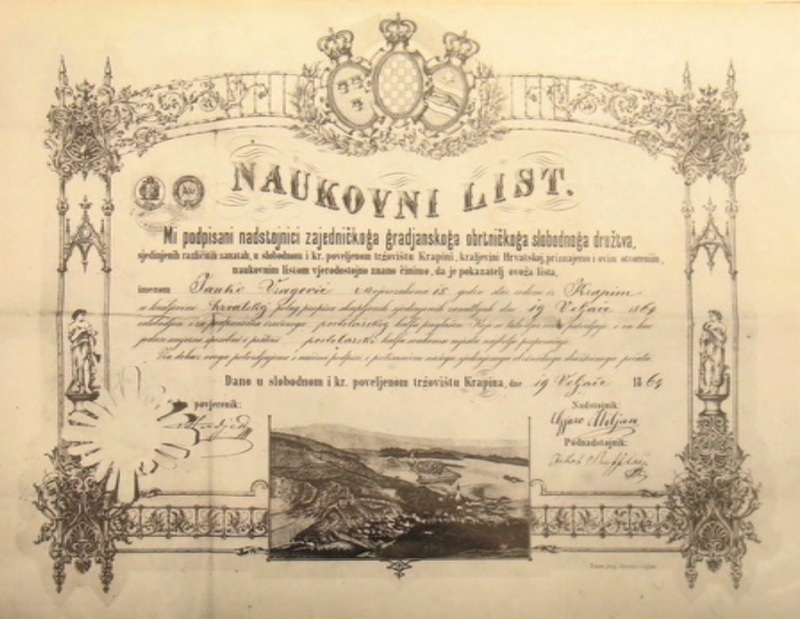
Naukovni list (certificate) from the town of Krapina, 1864., with the Coat of Arms of United Kingdom of Croatia, Slavonia and Dalmatia
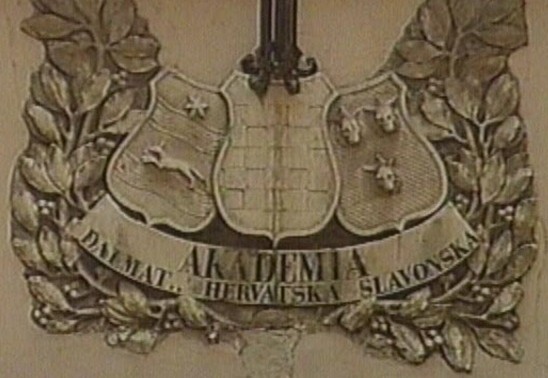
Akademia Dalmatinska, Hervatska, Slavonska in Zagreb, 1669.
Croatian Coat of Arms above the main entrance of the former
Jesuit gymnasium in Zagreb, founded in 1607 (today Gornjogradska gimnazija in the Upper Town of Zagreb) .
Leopold I., the Emperor of the Holy Roman Empire, issued a Diploma in 1669, by which the status and privileges of a university were accorded to the Jesuit Academy in the Royal Free City of Zagreb. This represents the beginning of the University of Zagreb.
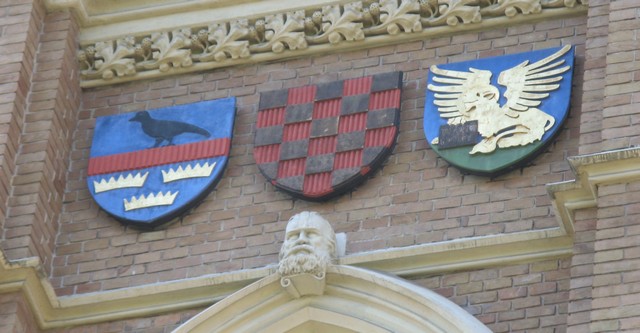
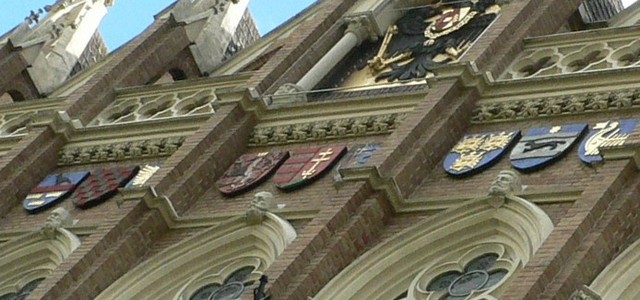
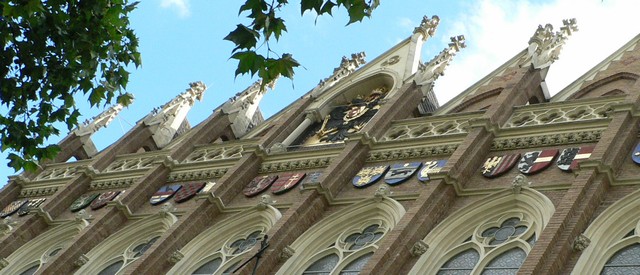
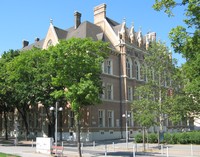
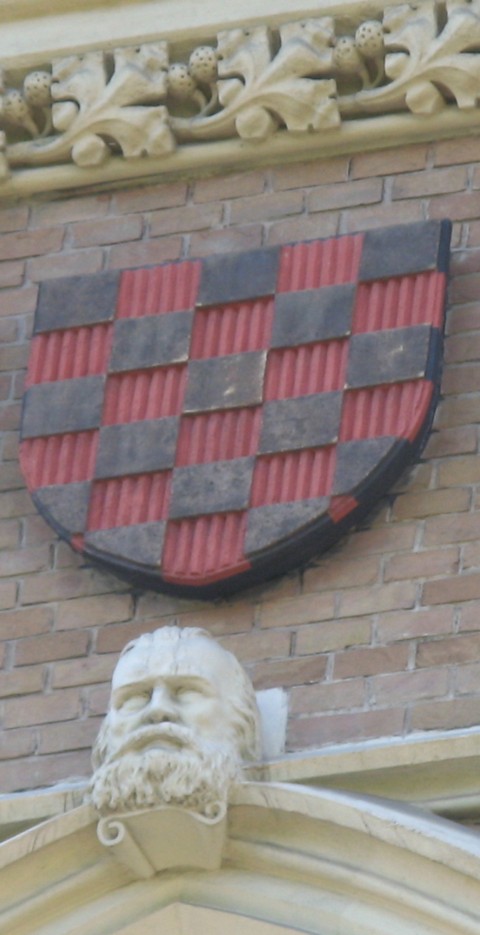
Croatian Coat of Arms in Vienna, captial of Austria, Akademisches Gymnasium (1863-1866),
Beethovenplatz 1. The Gymnasium was founded in 1553, but in 1866 it moved to the new building. The Coats of Arms are from the middle of the 19th century. The gymnasium was attended by distinguished people, like Erwin Scrhödinger, a famous physicist and Nobel Prizer winner. By the courtesy of Mr. Kristian Dumancic, Vienna.
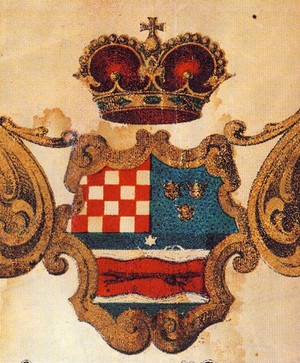
Croatian Coat of Arms on a diploma issued to a honorary citizen of the town of Krapina near Zagreb, 1864
(Coat of Arms of the United Kingdom of Croatia, Dalmatia and Slavonia)
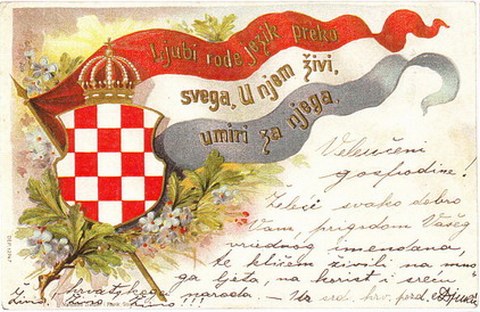
Postcard with Croatian Coat of Arms from the 19th century.
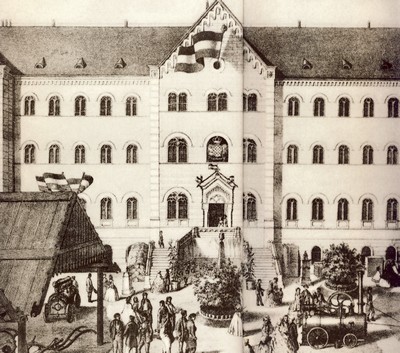
The First Fair of The United Kingdom of Dalmatia, Croatia and Slavonia, held in Zagreb in 1864.
Source: Ekonomski fakultet u Zagrebu 1920-1995, Zagreb 1995, p 18.
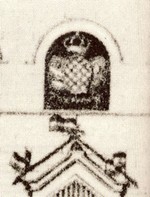
Croatian Coat of Arms is in the center of the above photo,
with Slavonian Coat of Arms (marten or kuna) on the left, and Dalmatian Coat of Arms (three leopards) on the right.
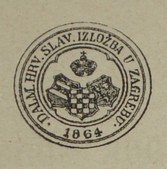
A seal of an exhibition in 1864 in Zagreb
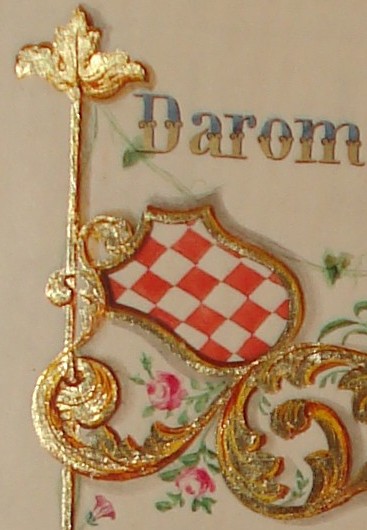
Donors of the Croatian Music Hall (Hrvatski glazbeni zavod, Gunduliceva 6, Zagreb), 1871,
inscribed in the golden book; a part of exhibition at HGZ
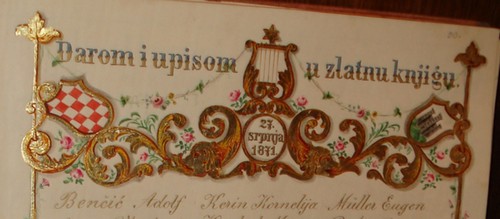
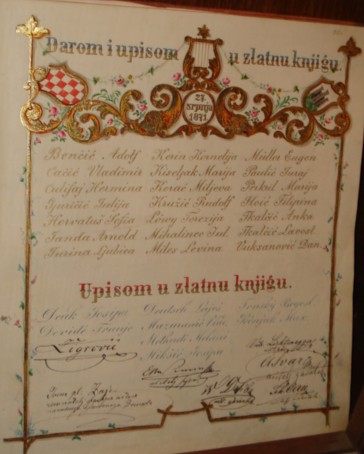
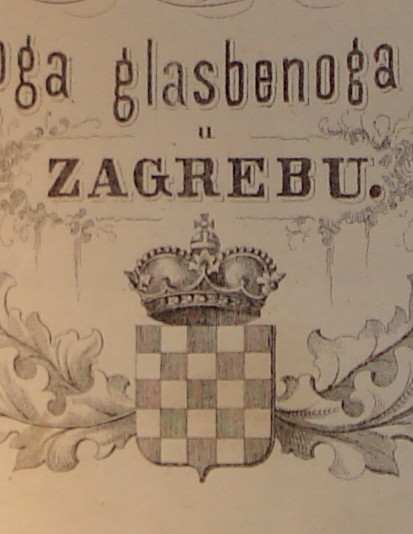
Sbirka razlicitih hervatskih narodnih napjevah za porabu narodnoga glasbenoga zavoda u Zagrebu
(A collection of various Croatian folk songs for the needs of Croatian Music Hall, Gunduliceva 6, Zagreb),
kept in the Library of the Music Department of the Croatian Academy of Sciences and Arts,
probably from 1862 (photo - a part of exhibition at HGZ)
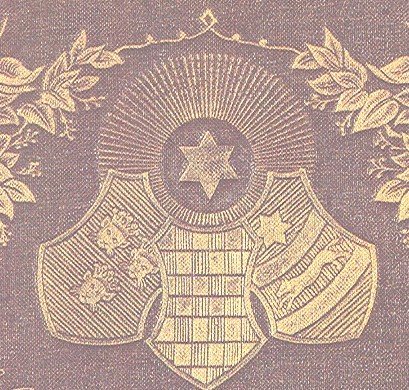
August Senoa, Croatian writer: Vienac domaceg piesnictva, (a detail from the title page), Zagreb, 1873
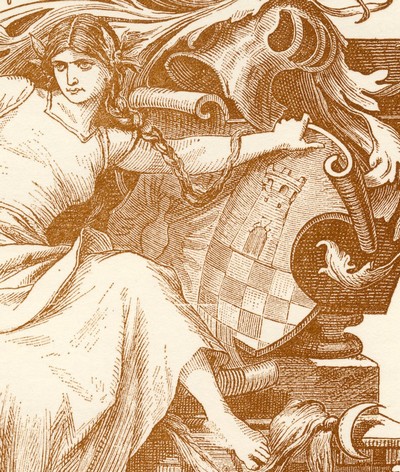
A detail from the announcement of the opera Nikola Subic Zrinski by Ivan Zajc, 1876.
The most popular air of the opera is U Boj, known also in Japan since 1919!
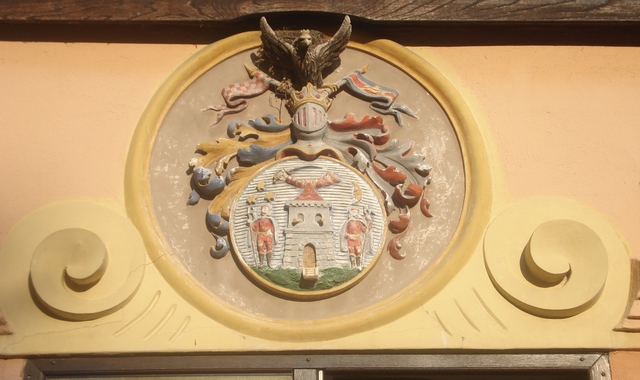
Croatian Coat of Arms above the main entrance of the Turopolje Museum, Velika Gorica, near Zagreb.
This is the coat of arms of Plemenita turopoljska općina - Noble Turopolje District.

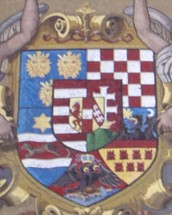
Coat of Arms of Hungary, Dalmatia, Croatia, Slavonia, Transylvania, 1880, Budapest
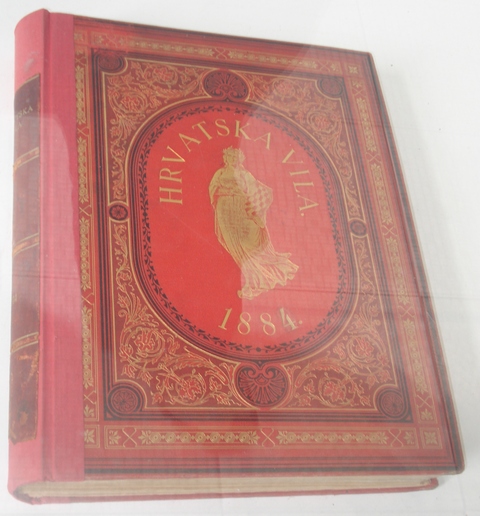
Hrvatska vila - Croatian Fairy 1884
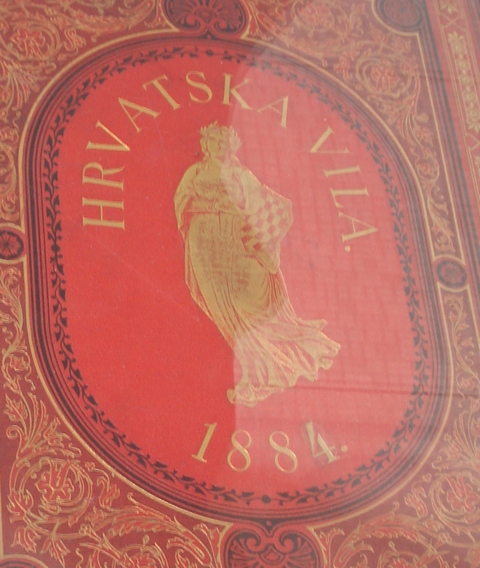
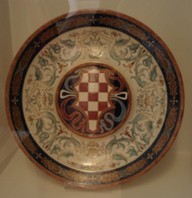
A plate with Croatian Coat of Arms, Obrtnicka skola (Crafts School), Zagreb 1887, kept in the Museum of Arts and Crafts, Zagreb
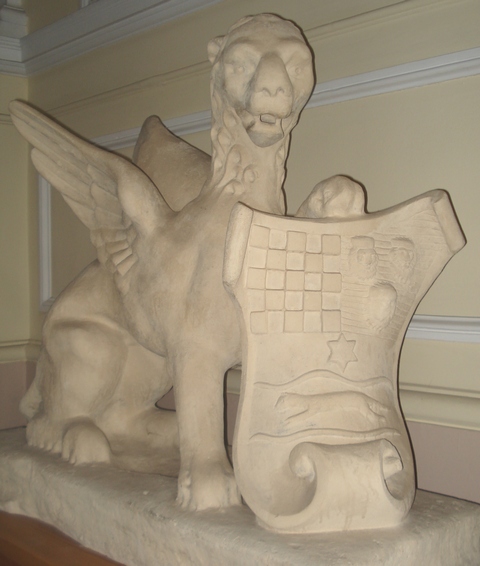
Education (Croatia) with the Coat of Arms of the Kingdom of Croatia, Slavonia and Dalmatia,
kept in the Croatian School Museum (Hrvatski školski muzej), Kazališni trg in Zagreb.
Carved in 1889 by Dragutin Morak.
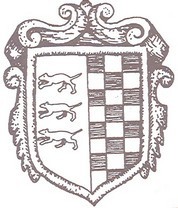
Coat of arms of the Kastel captains; Kastel is a town from Istria, near the river Dragonja
(photo from Just Ivetac: Korijeni istarskih gradova, J. Turcinovic d.o.o., Pazin 2002., p. 64)
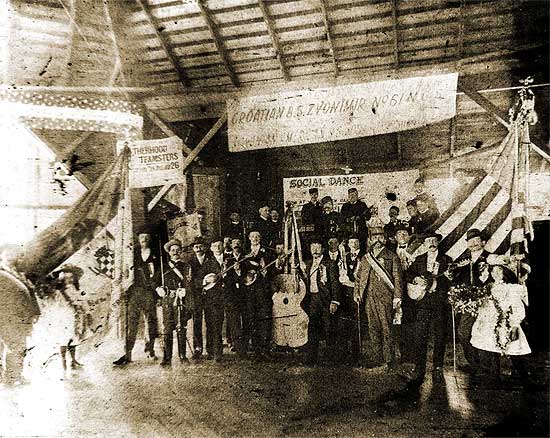
Social Dance, Croatian B. Zvonimir tamburitzans (USA), 19th century,
see Croatian flag with coat of arms on the left, and American on the right.
Source: Croatian American Web, USA,
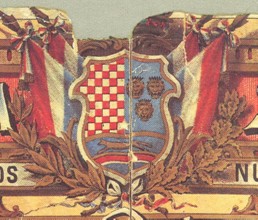
Croatian coat of arms in Antofagasta (!), Chile, 1892
from the cover page of Ljubomir Antic: Hrvati u Juznoj Americi (Croats in South America)
Coat of Arms of the United Kingdom of Croatia, Dalmatia and Slavonia
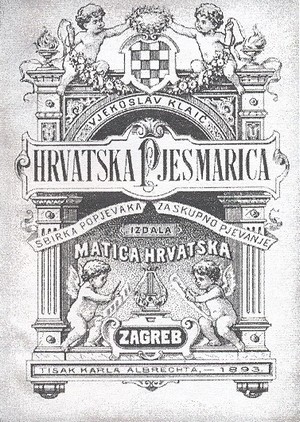
Vjekoslav Klaic (a famous Croatian historian): Hrvatska Pjesmarica (Croatian Songbook),
Matica hrvatska, Zagreb 1893.
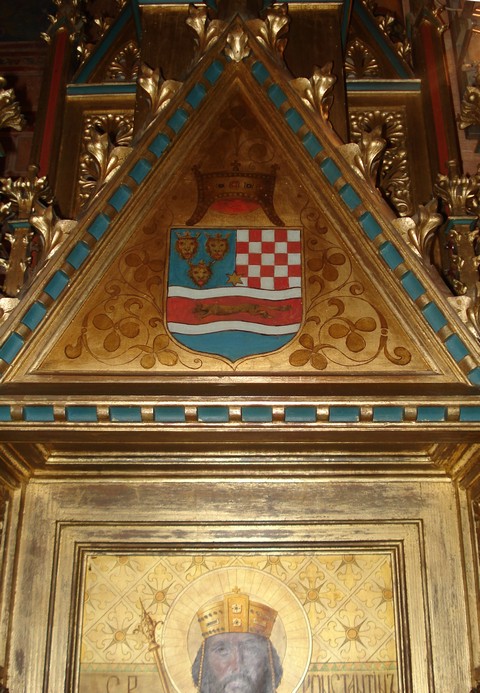
Croatian Coat of Arms from 1890s in Greek Catholich Cathedral of Holy Trinity in Krizevci
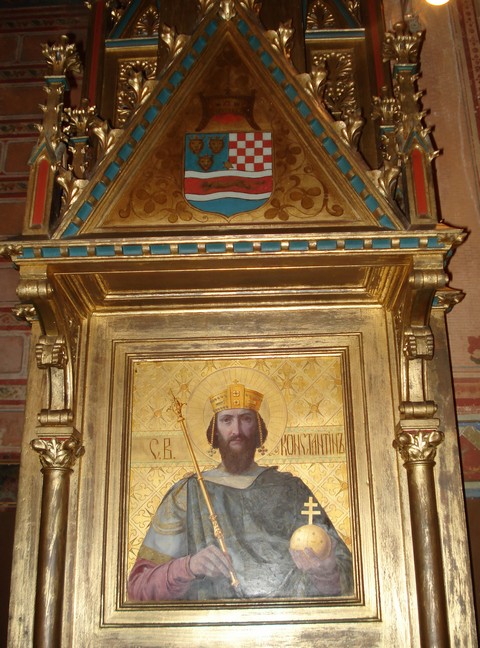
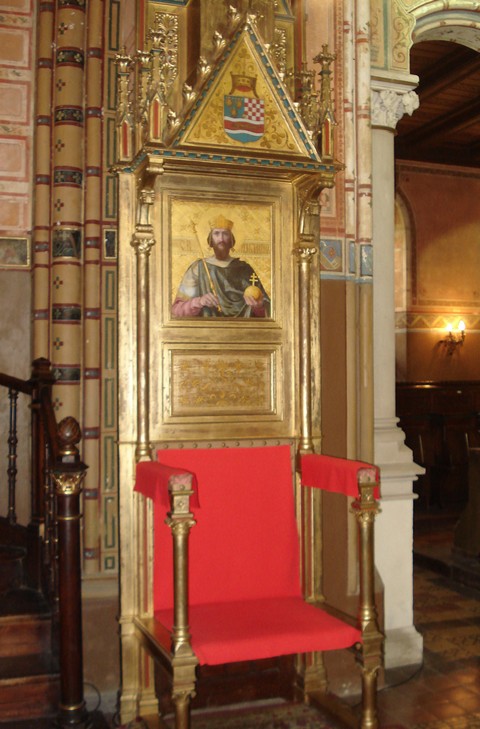
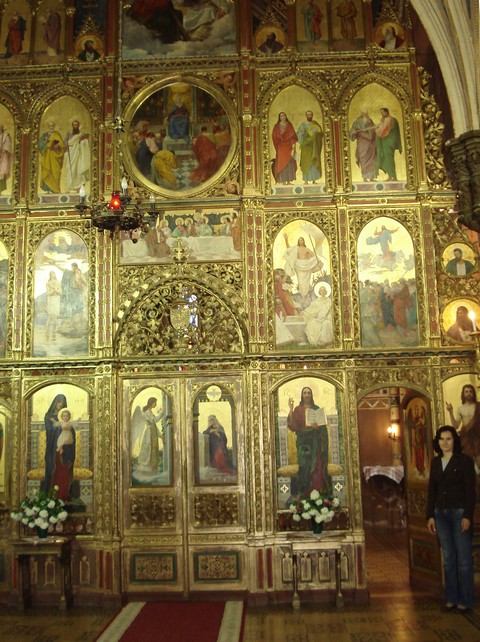
Iconostas in the Greek Catholic Cathedral of Holy Trinity in Krizevci, an old Croatian town founded in 12th century, about 100 km from Zagreb. The above Croatian Coat of Arms is placed on the left of iconostas. The iconostasis and the pictures on the walls are works of famous Croatian painters including Ivan Tisov (he also made pictures in the Greek Catholic Church in Zagreb), Celestin Medovic and Bela Cikos-Sesija.
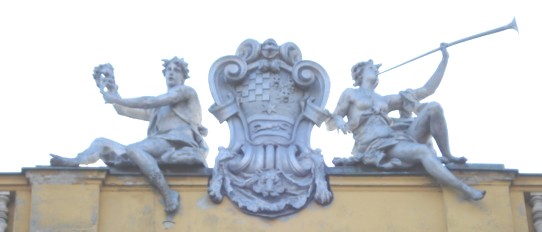
Croatian coat of arms above the main entrance of the Croatian National Theatre in Zagreb, 1895
(Coat of Arms of the United Kingdom of Croatia, Dalmatia and Slavonia)
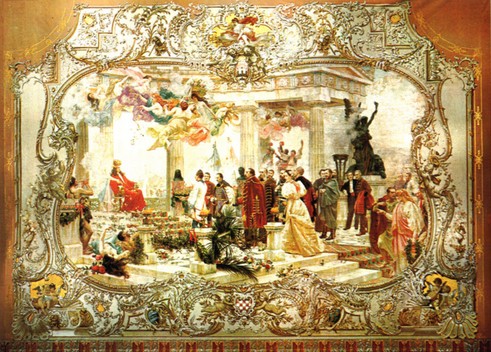

A detail from the ceremonial curtain of the Croatian National Theatre, Zagreb, by Vlaho Bukovac, 1895

Note the Croatian Coat of Arms behind him, on the solemn curtain of the theatre, designed by Vlaho Bukovac in 1895.
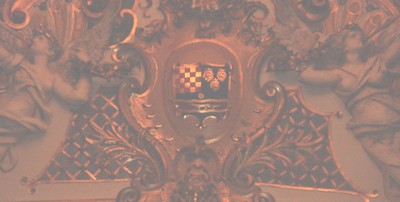
Central part of the ceiling of Croatian National Theatre in Zagreb, 1895
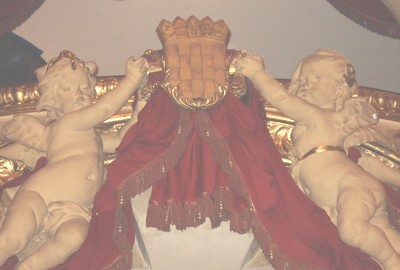
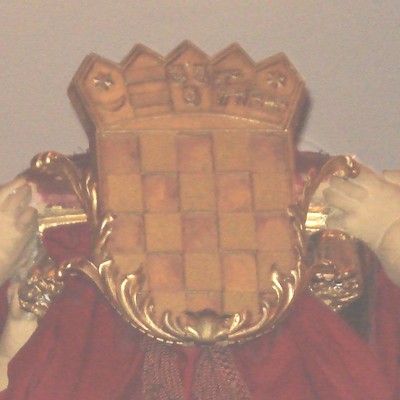
A detail under the right-hand side loge in the main hall of the Croatian National Theatre, 1895
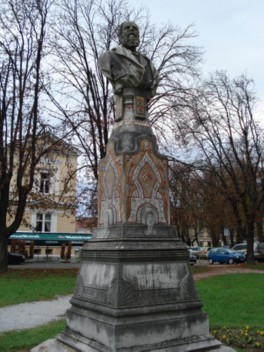
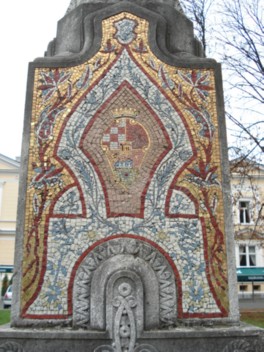
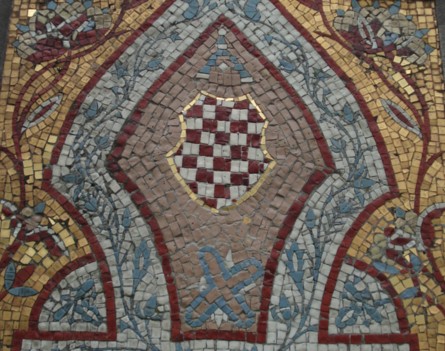
Croatian historian Radoslav Lopasic, city of Karlovac (Zorin dom park), carved by Ivan Rendic, 1896
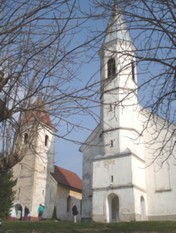
Croatian coats of arms, 19th century, in the Greek Catholic church of St. Peter and Paul in Sosice, Zumberak
(the Roman Catholic church on the left is just by the Greek Catholic church)
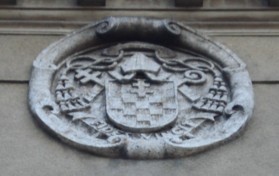
FIDES VINCIT - Zagreb, Vlaska 70E, 19th century
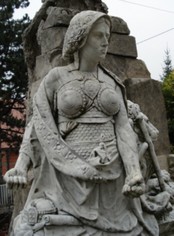 | 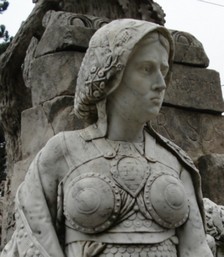 |
A detail from the stone monument on the grave of Ante Starcevic (1823-1896), Sestine - Zagreb,
by Croatian sculptor Ivan Rendic (1849-1932)
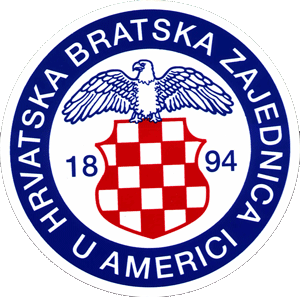
Croatian Fraternal Union, 1894; source Northwest Croatians
Croatian Fraternal Union, USA, 1894
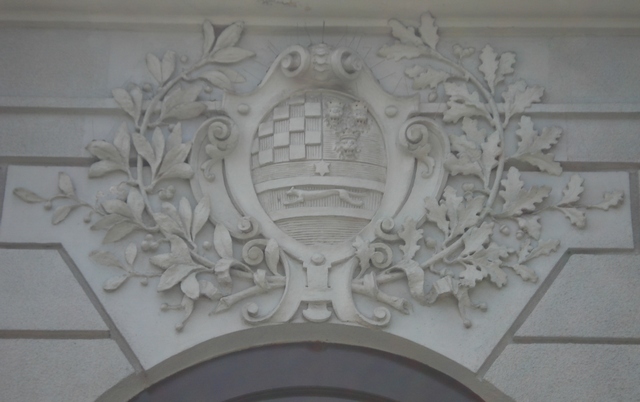
The building of the Fifth Gymnasium in Zagreb (Klaićeva 1) exists since 1895.
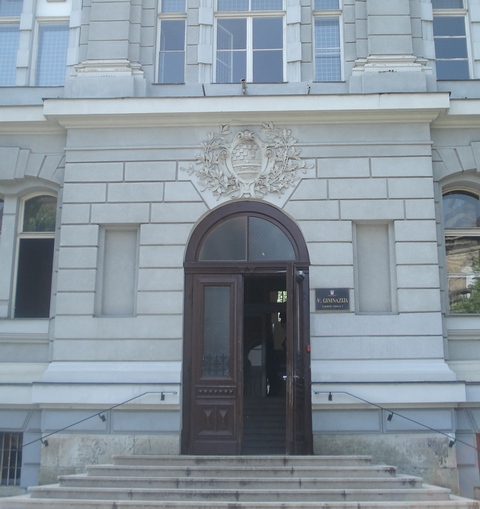
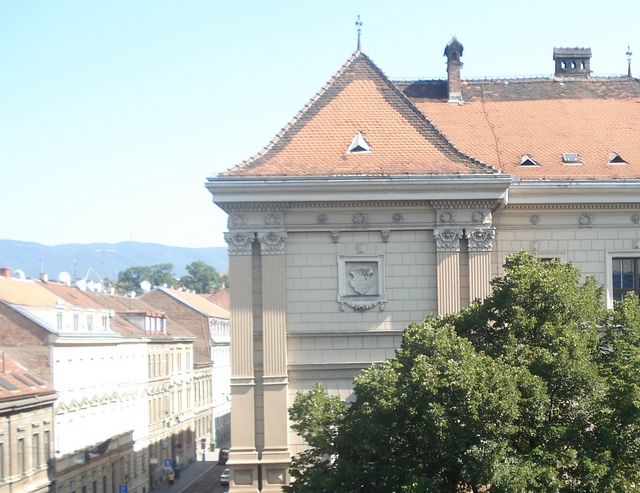
Ekonomic School in Zagreb, 1895, Klaićeva street, photo from the Vth Gymansium
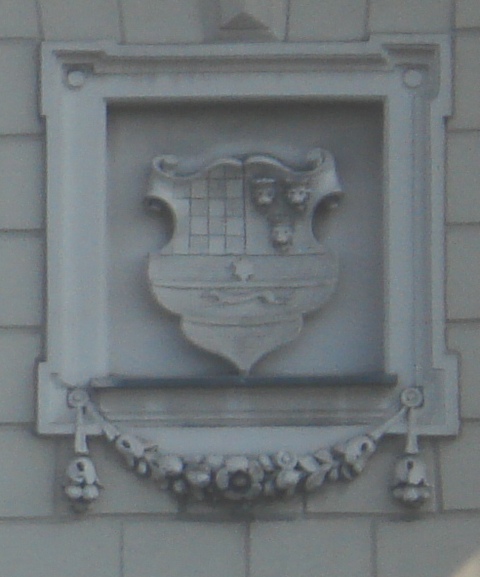
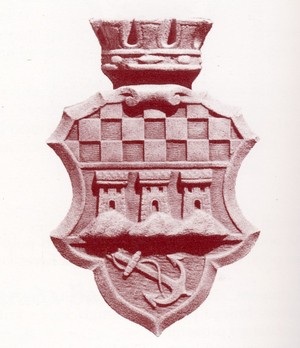
Coat of Arms of the town of Bakar, 19th century; photo from [Ostric]
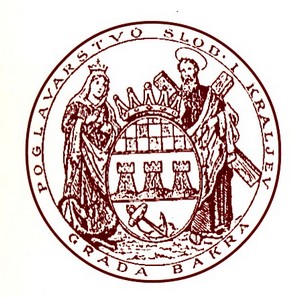
Seal of the City Hall of the Free Royal City of Bakar, 1897; photo from [Ostric]
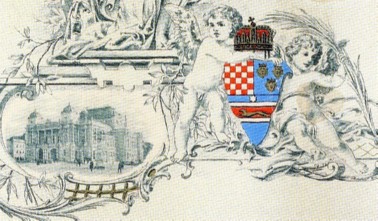
1898 Charter from the Croatian National Theatre in Zagreb conferring honorary membership to Milka Trnina,
a famous Croatian opera singer (source [Premerl, p 86]),
with the Coat of Arms of the United Kingdom of Croatia, Dalmatia and Slavonia
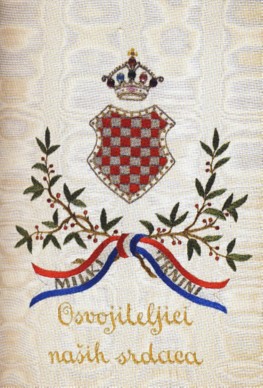
Folder containing poems dedicated to Milka Trnina, Zagreb, 1898 (source [Premerl, p 87])
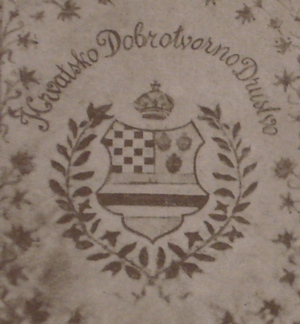
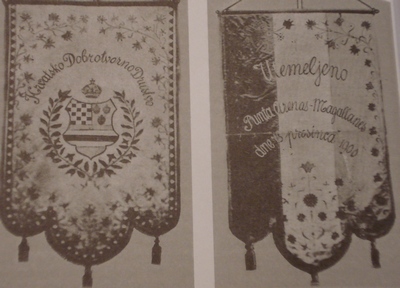
Croatian Benefactor's Society, Punta Arenas - Magellanes, Chile, 1900
Hrvatsko Dobrotvorno Društvo, Utemeljno dne 13 prosinca 1900
photo from [Glasinovic, p 70]
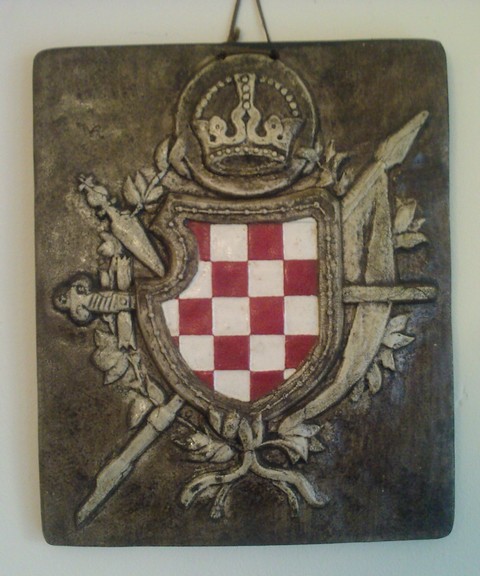
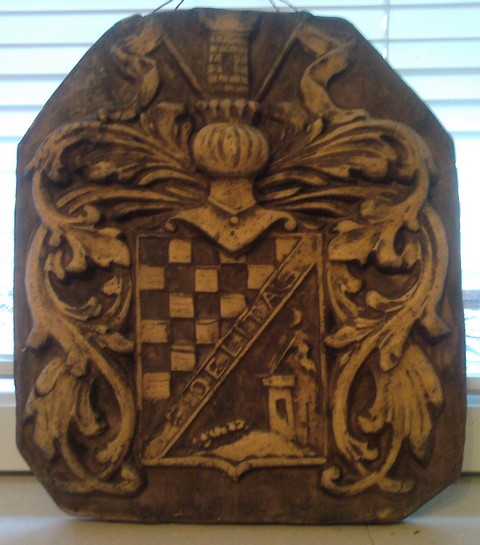
Two Croatian Coats of Arms (the second one with inscription FIDELITAS along the diagonal), probably from the end of 19th or beginning of 20th centuriey. Many thanks to Mr Ivan Filipcic, Zagreb, for the photos.
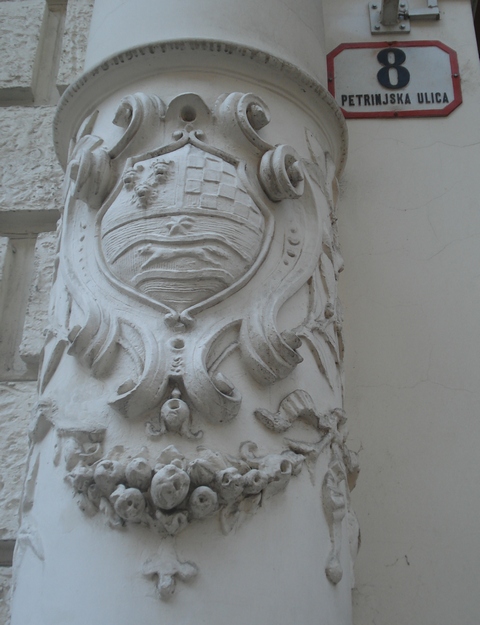
Petrinjska street 8, Zagreb
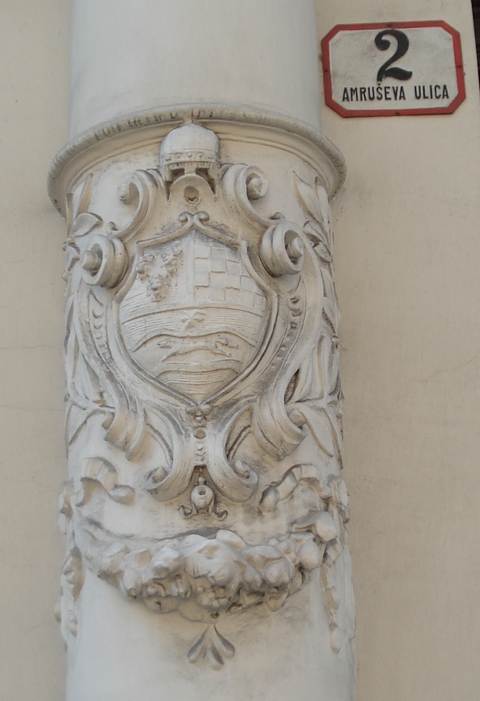
Amruševa street 2, Zagreb
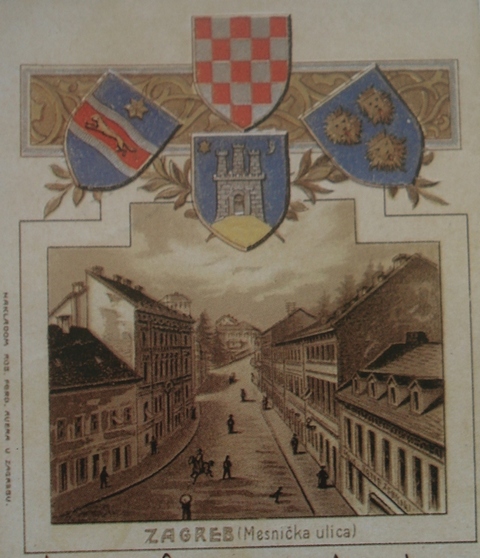
Zagreb, Coat of Arms of Croatia, Slavonia and Dalmatio, below them the Coat of Arms of the City of Zagreb;
Mesnička street in Zagreb
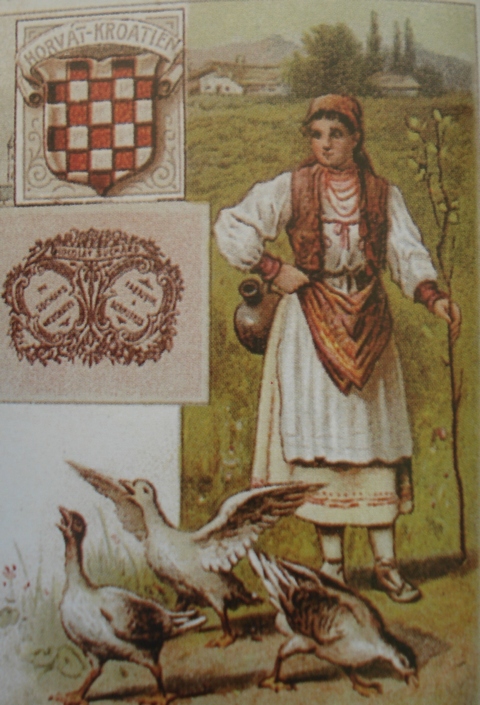
A detail of a postcard containing Croatian Coat of Arms
Formated for CROWN by Darko Žubrinić
Distributed by www.Croatia.org . This message is intended for Croatian Associations/Institutions and their Friends in Croatia and in the World. The opinions/articles expressed on this list do not reflect personal opinions of the moderator. If the reader of this message is not the intended recipient, please delete or destroy all copies of this communication and please, let us know!
